Scrapbook: Royal Palm Hotel
A postcard trip to one of Fort Myers' most glamorous lost attractions
The Royal Palm Hotel sat on the waterfront on First Street in Fort Myers from 1898 to 1948, when it was demolished. The brainchild of Irish-born New York department store magnate Hugh O’Neill, the hotel was later owned by businesswoman Tootie McGregor Terry and her husband, Dr. M.O. Terry. Bay Street was later extended through the property.
(Vintage postcard illustration, from floridamemory.com, c. 1910)
This newsletter takes its name from the hotel: I like to imagine we’re virtually sitting on the veranda or having drinks in the music room, reading the news of Fort Myers past. Here are some of my favorite images of this grand property.
1898-1908
Hugh O’Neill opened the Royal Palm (Fort Myers Hotel) in 1898. He died in 1902, and the property began fading, until it was rescued by Tootie McGregor Terry in 1907. Mrs. Terry poured money into expansions and opened in 1908, when guests were introduced to a spring-fed swimming pool and other amenities.
(Vintage postcard illustration, 1905, along the Caloosahatchee River)
(Vintage postcard illustration, the swimming pool at the Royal Palm; Thomas Edison later had one very like it built at his home.)
1910s
Fort Myers hit a long cycle of prosperity after the 1910 hurricane, and the opulence of the city’s finest hotel is the proof. A casino opened for the winter season in 1912.
(Rowing toward the Hotel Royal Palm, c. early 1910s. Courtesy Hanson Family Archives)
(Vintage postcard illustration, c. 1910s)
(Vintage postcard illustration, c. 1910s)
(Postcard, from floridamemory.com. The casino opened for the 1912 season.)
1920s
The hotel was painted colonial yellow before the 1921 season, and, with the early landscaping maturing, the grounds had become a tropical wonderland.
(Vintage postcard illustration, late 1920s)
(Vintage postcard illustration, after 1921)
(Vintage postcard illustration, after 1921)
Bonus: Hugh O’Neill
I had never seen a photo of Hugh O’Neill, and he didn’t look at all like I thought he would. When he died in 1902, the New York Times said his was one of the most largely attended funeral services in the city at that time.
(Hugh O’Neill, published in a dry goods trade magazine after his death in 1902)
(Hugh O’Neill building, now residences, 665 Avenue of the Americas, Manhattan, 2022, from Wikimedia Commons)








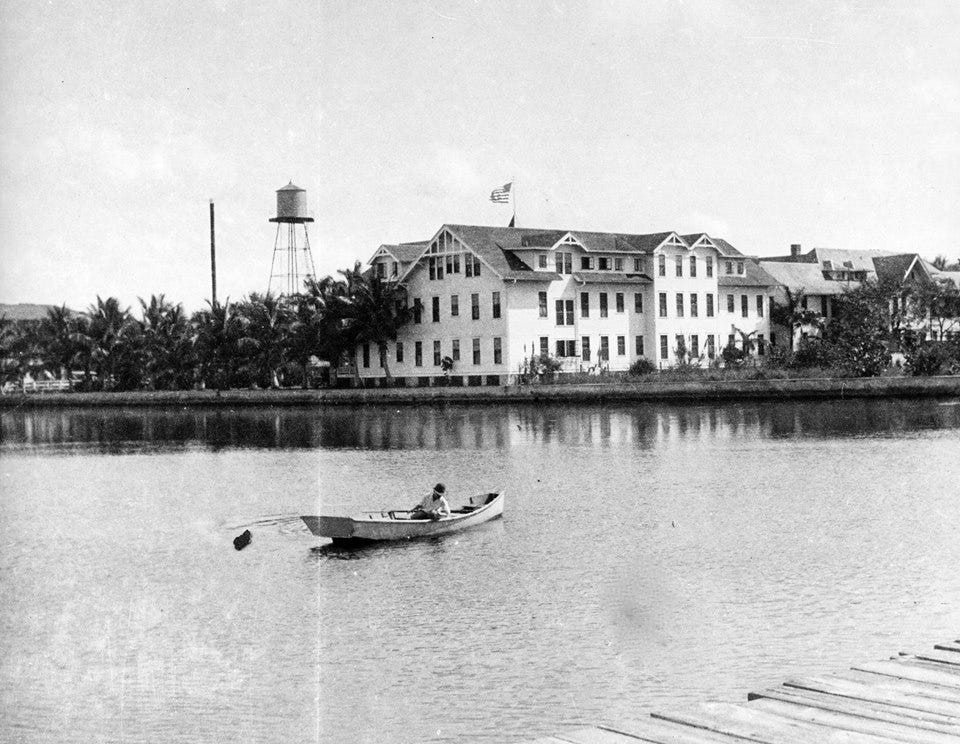
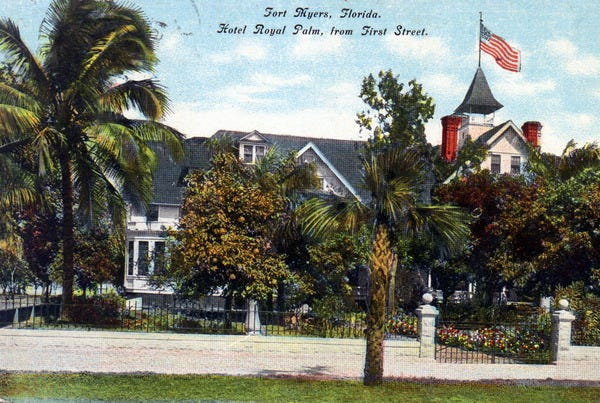
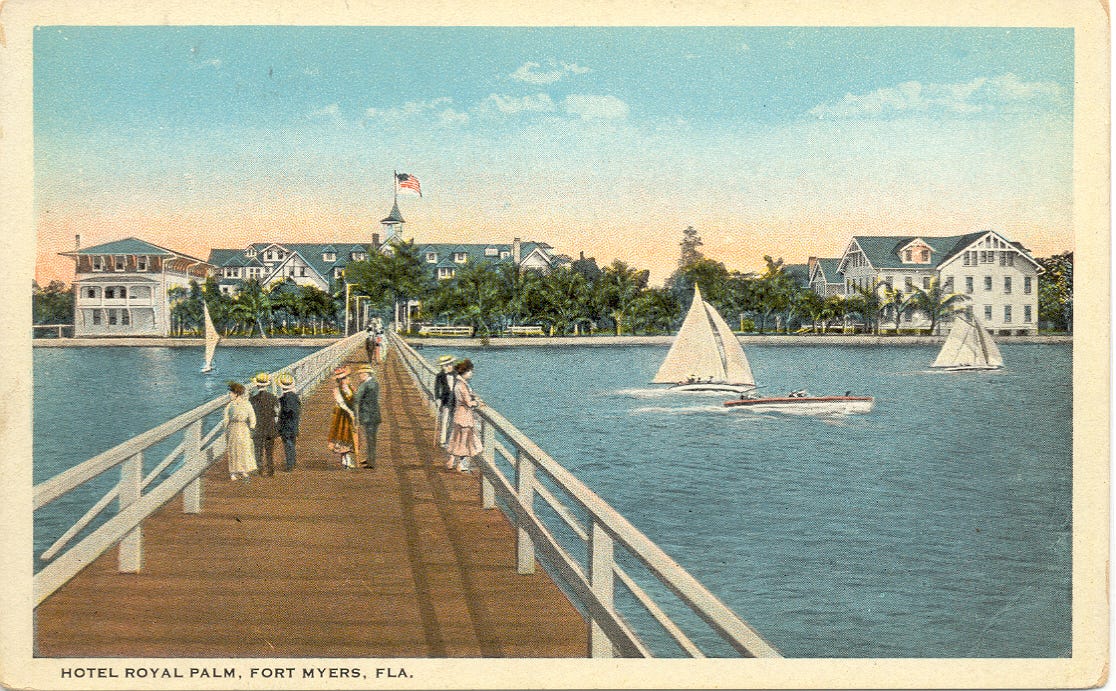
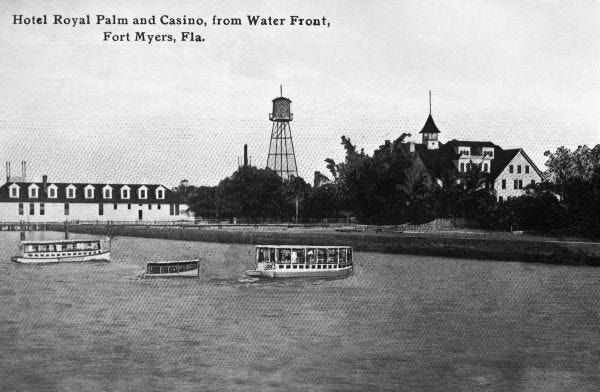
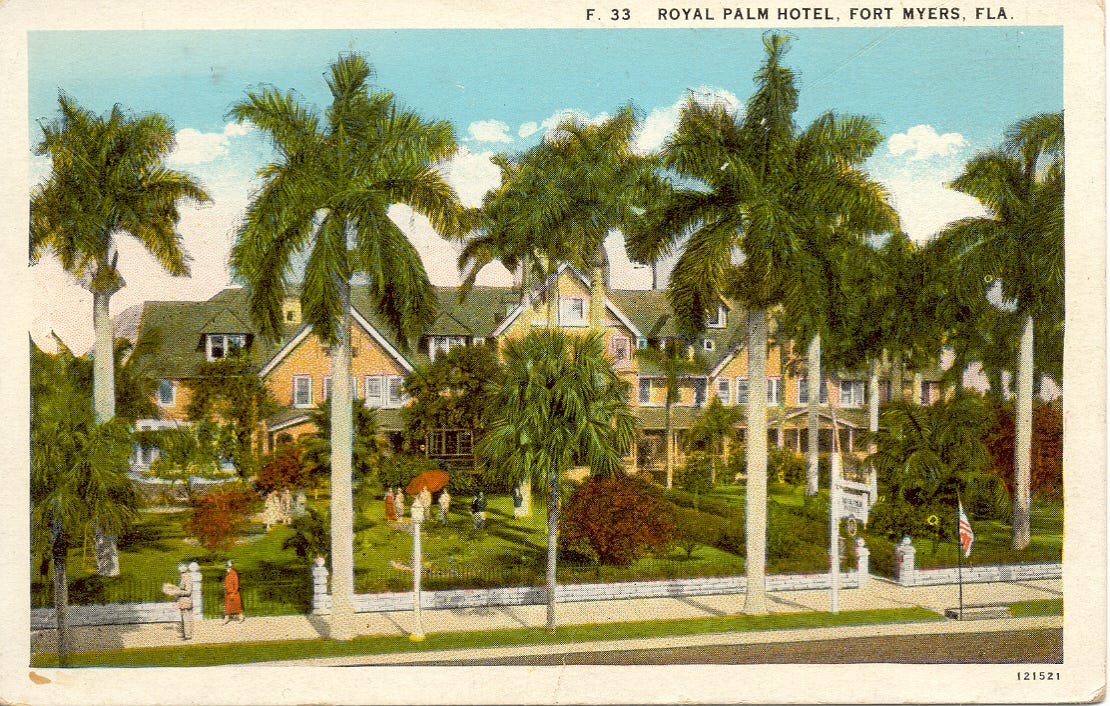
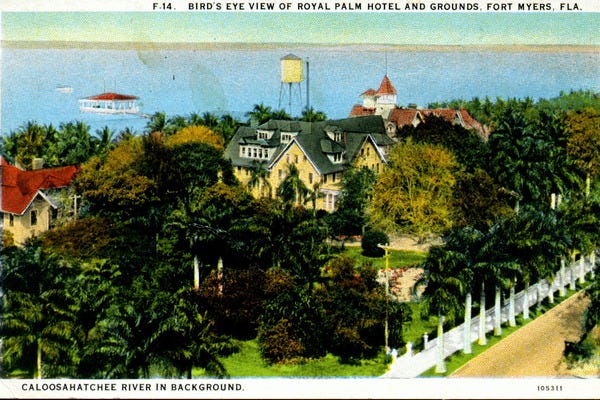

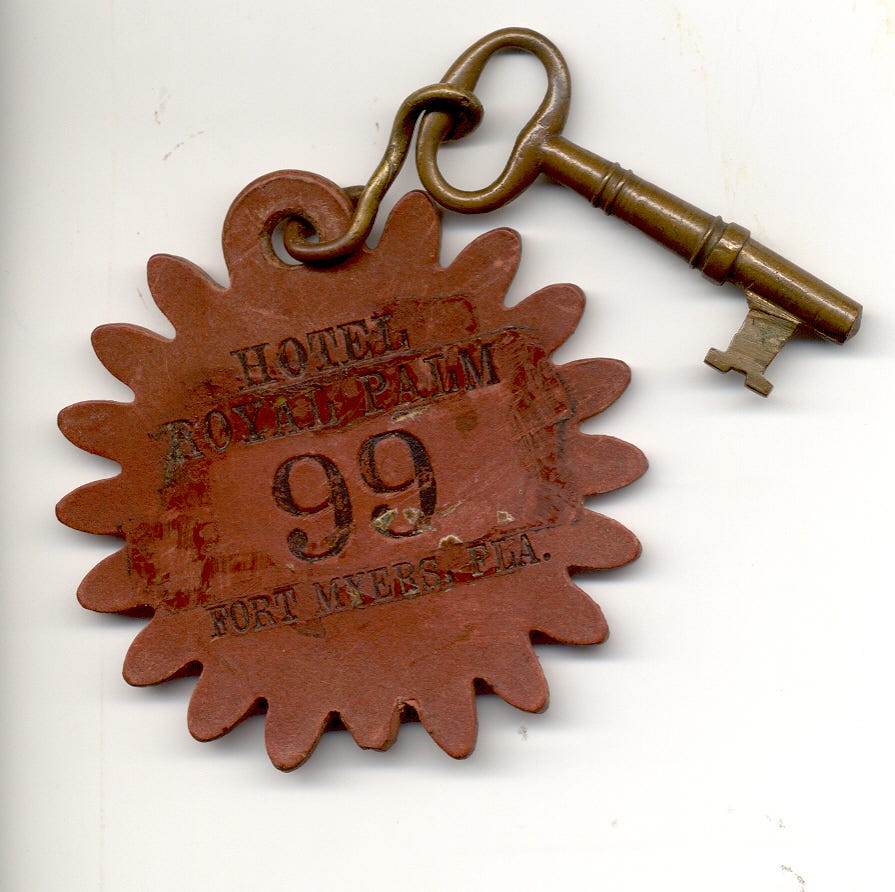


Love this!